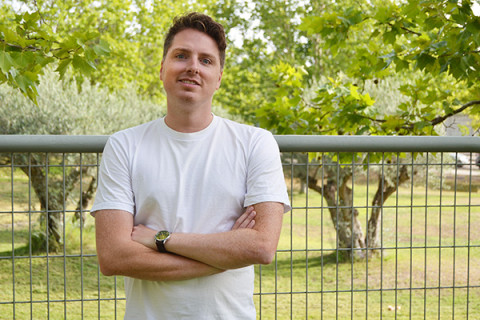Henrik Lyder Andersen, new Marie Curie researcher at ICMM-CSIC

Henrik Lyder Andersen is a new postdoc researcher at the Materials Science Institute of Madrid (ICMM-CSIC). He joined our centre on September, 1st and is working with José Antonio Alonso at Energy Conversion, Harvesting and Storage Group. He comes from Denmark thank to a Marie Skłodowska-Curie Postdoctoral Fellowship. Here you can meet him:
What have you worked on so far?
I carried out my PhD under the supervision of Prof. M. Christensen at Center for Materials Crystallography, Aarhus University, Denmark. My doctoral work focused on nanostructuring of magnetic materials and on studying the nucleation mechanisms, crystallization dynamics and growth kinetics of nanoparticles in real-time using in situ synchrotron total scattering with PDF analysis and powder X-ray diffraction techniques. My PhD also involved a Scientific Stay in the group of Assoc. Prof. Neeraj Sharma, UNSW, Sydney, Australia, investigating the structure and electrochemical properties of Sc/Al2(W/MnO4)3 negative thermal expansion materials. Following my PhD, I was awarded a Carlsberg Foundation Internationalisation Fellowship, which I used to return to UNSW for 2.5 years. Here, I studied transition metal oxides for Li- and Na-ion battery applications predominantly using operando neutron and synchrotron diffraction techniques to examine their structural evolution during charge/discharge. I continued this work at the Dept. of Materials Physics at the Complutense University of Madrid through a Maria Zambrano Fellowship for attraction of international talent, before joining ICMM with a Marie Curie Postdoctoral Fellowship.
What will you work on? With whom?
I am joining the laboratories of José Antonio Alonso in the Energy Conversion, Harvesting and Storage Group. Here, I will work on designing sustainable rechargeable batteries with superior stability and energy density. In particular, I intend to study Li-rich versions of layered oxide cathodes exhibiting oxygen redox activity, which can deliver exceptional capacities (> 40% higher than state-of-the-art NMC811 cathodes), due to the cumulative cationic and anionic redox processes. However, the materials suffer from issues with poor energy efficiency, reduced power density and voltage decay, which must be solved before they can be considered for commercial applications.
What would you like to contribute to the institute?
I bring considerable experience with in situ and operando X-ray and neutron scattering/diffraction techniques as well as local-, crystal- and micro-structural scattering data analysis using PDF, WPPM and Rietveld methods. I will be happy to share my expertise and collaborate with colleagues at ICMM who are interested in conducting such experiments.
Why ICMM?
I decided to go to ICMM because it is a leading centre in materials research with excellent scientific infrastructure and state of the of art equipment, such as the new Bruker Venture D8 X-ray diffractometer, which allows in-house collection of total scattering data for PDF analysis.
And a personal touch: any hobbies?
I enjoy having aperitivos with friends in the sun, which I have been introduced to by my Spanish wife. To compensate and burn some of the calories, I like to go running outdoors. I also love traveling and have done long trips to every continent (except for Antarctica) visiting everything from the Dead Sea (lowest point on Earth) to Mount Everest Base Camp.
ICMM
Sor Juana Ines de la Cruz, 3
Cantoblanco, 28049
Madrid, España
Teléfono: (+34) 91 334 90 00
Email: @email
Oficina de Comunicación/Prensa: @email

Acknowledge the Severo Ochoa Centres of Excellence program through Grant CEX2024-001445-S/ financiado por MICIU/AEI / 10.13039/501100011033

Contacto | Accesibilidad | Aviso legal | Política de Cookies | Protección de datos